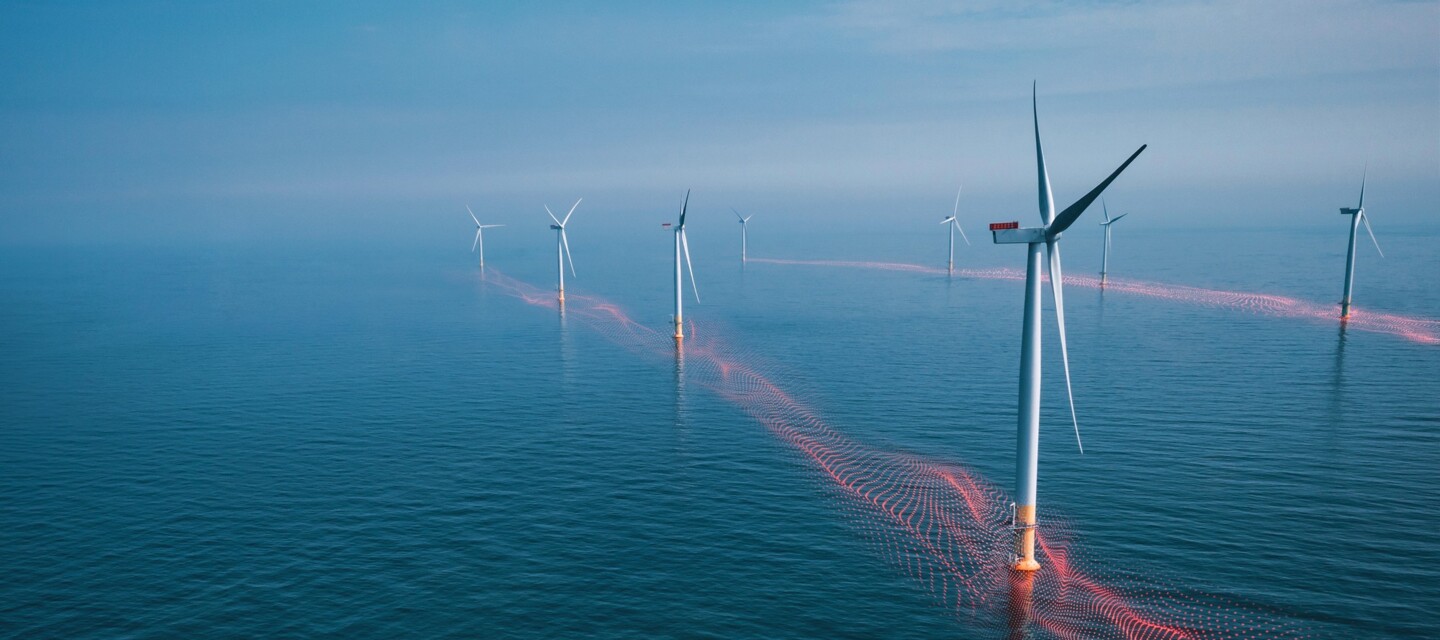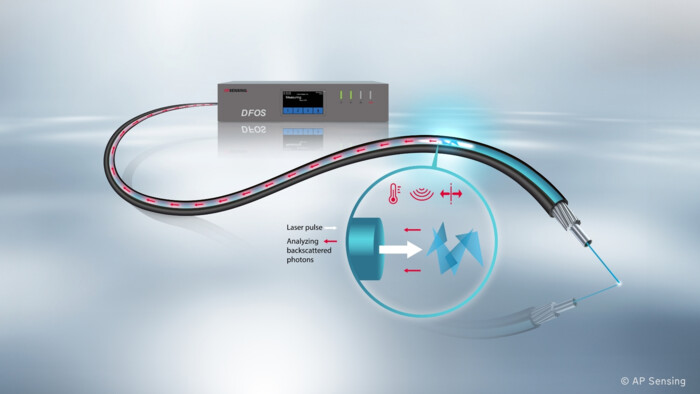This editorial was first published on September 8, 2025, in Critical Infrastructure Protection & Resilience News.
Author: Clemens Pohl, CEO of AP Sensing
Across the globe, critical energy infrastructure is under growing pressure from both natural hazards and human-caused threats. Power grids are being pushed to their thermal and operational limits. Pipelines are exposed to third-party interference and environmental stress. Cable tunnels, transformer yards, and other confined spaces carry increasing fire risks. These assets often stretch across vast distances and pass through remote or hard-to-access areas where conventional monitoring solutions offer little real-time insight. Recent sabotage attacks on submarine cables in Europe have brought these vulnerabilities sharply into focus. To ensure safe and reliable operation, operators must detect anomalies early, localize threats precisely, and respond before failures escalate. Distributed Fiber Optic Sensing (DFOS) offers a powerful approach by transforming existing fiber optic cables into continuous, real-time sensing networks. This enables a new level of infrastructure awareness and resilience.
Distributed Fiber Optic Sensing (DFOS): How It Works
DFOS leverages the physics of light scattering within optical fibers to turn passive cable infrastructure into high-resolution, real-time sensors. DFOS is applied through three core methods: Distributed Acoustic Sensing (DAS), Distributed Temperature Sensing (DTS), and Distributed Temperature and Strain Sensing (DTSS). Each technology detects and localizes different physical phenomena along the entire length of the fiber without requiring additional in-field sensors.
At the heart of each method is a simple principle. A laser pulse is sent through a standard fiber optic cable, and the system continuously analyzes the light that is scattered back toward the source. When conditions along the fiber change, such as a shift in temperature, vibration, or strain, the properties of the backscattered light are altered. By measuring and interpreting these changes, the system can determine where along the fiber the event occurred, often with meter-level resolution. The type of scattering observed determines whether the system is sensing acoustic signals, temperature changes, or mechanical stress.
Because the fiber itself serves as the sensing element, DFOS provides continuous coverage across long distances. In contrast to conventional point sensors, which must be installed at multiple locations and only monitor discrete spots, DFOS transforms an entire length of optical fiber into a distributed array, allowing for comprehensive event detection and localization along the entire infrastructure. This makes it well suited to monitoring linear infrastructure with complex risk profiles.
Distributed Acoustic Sensing (DAS) uses coherent optical time domain reflectometry (C-OTDR) to analyze Rayleigh backscattering in fiber optics. This makes it possible to detect acoustic vibrations caused by external activity, such as footsteps, vehicles, digging, or mechanical stress, over distances of up to 100 km. DAS systems interpret these vibrations with the help of machine learning algorithms that classify and filter events in real time. This enables operators to distinguish between benign environmental influences and serious threats, such as tunneling or unauthorized access. Because DAS uses the fiber itself as the sensing element, it offers complete linear coverage and high spatial resolution.
Distributed Temperature Sensing (DTS) measures temperature changes along the fiber using Raman scattering principles. This technology enables accurate, real-time monitoring of thermal conditions across critical assets such as cable tunnels, transformer yards, or buried power lines. DTS can detect localized heating events, signal potential equipment failure, and identify fire risks. This is especially valuable in environments where uninterrupted operation and rapid response are critical, such as railways and power grids.
Distributed Temperature and Strain Sensing (DTSS), based on Brillouin optical time domain reflectometry (BOTDR), adds an additional layer of insight by measuring both thermal and mechanical strain. DTSS provides structural health monitoring over long distances, identifying issues such as ground movement, mechanical strain, or shifting in buried infrastructure. It operates reliably in environments with high electromagnetic interference, such as power substations. It also supports condition-based maintenance by identifying subtle, long-term structural changes that might otherwise go undetected.
Together, these DFOS technologies form a complementary system capable of detecting, classifying, and localizing anomalies in real time. They provide operators with a continuous understanding of what is happening along their networked infrastructure.
Real-World Applications Across Infrastructure Sectors
Power Grids
Power transmission networks face the dual challenge of rising demand and aging infrastructure. With DFOS, operators can continuously monitor underground and subsea cables, as well as bus duct systems and overhead lines. Temperature and acoustic data help detect hot spots, joint failures, or overloads before they become critical. Real-time ampacity calculations and early warning of emergency ratings allow for dynamic load management. For submarine cables, sensing technologies can also infer burial depth and detect localized disruptions caused by seabed movement or external interference.
Pipelines
DFOS technologies are increasingly used in oil and gas and water pipelines to address risks such as third-party intrusion, leaks, structural stress, or environmental damage. Acoustic sensing detects mechanical vibrations linked to unauthorized digging or tapping, while strain sensing identifies ground shifts that could compromise pipe integrity. DTS adds the ability to detect leaks based on thermal anomalies, enabling more precise incident response and better compliance with safety and environmental standards.
Railways
Rail systems are exposed to multiple operational and external risks, including track faults, equipment degradation, landslides, and vandalism. DAS enables detection of acoustic vibrations linked to wheel defects or broken rails and also serves as an early alert system for trespassing or cable theft. With the DTS technology, tunnels and stations handle fire detection. The system is fully certified to international standards and protects large scale infrastructure even in dusty and rough environments.
Border Protection
In perimeter security applications, DAS is used to detect and classify movement near fences or restricted zones. Fiber optic sensing identifies and distinguishes between footsteps, vehicle activity, and mechanical tampering, minimizing false alarms and enabling timely response. Since the fiber is often already installed as part of communication infrastructure, it becomes a dual-use asset for security and monitoring, especially in remote or unstaffed areas.
Real-World Insight: Leak Detection in an Ecologically Sensitive Pipeline Corridor
One example of distributed fiber optic sensing in action involves a pipeline monitoring project located in an ecologically protected coastal region in Northern Europe. The pipeline, which transports crude oil from an offshore platform to a mainland facility, runs through a designated national park known for its fragile biodiversity and tidal flats.
Given the sensitivity of the environment, local authorities required continuous monitoring with precise leak detection capabilities. A fiber optic-based Distributed Temperature Sensing (DTS) system, provided by AP Sensing, a global provider of DFOS solutions, was selected to monitor the entire eight-kilometer stretch of pipeline. The sensor cable, designed to withstand mechanical stress and positional shifts, was installed along the full length of the buried pipeline. The route includes directional drill sections up to 1,400 meters long and reaches depths of up to 20 meters below the seabed.
Once operational, the DTS system provided continuous temperature measurements in real time. This allowed for the early detection of thermal anomalies that could indicate a leak. To improve accuracy and responsiveness, intelligent alarm algorithms were configured to identify transient thermal behaviors that might otherwise be overlooked. These analytics made it possible to detect even small leaks and precisely locate the affected section. This gave the operator the ability to respond quickly and minimize environmental impact.
By integrating real-time sensing technology in a complex and environmentally sensitive context, the project demonstrated how DTS can enhance both operational safety and environmental protection.
Key Takeaways: What DFOS Enables for Infrastructure Operators
Continuous Monitoring
Fiber optic cables become full-length sensors, providing instant insights along the entire asset rather than at isolated points.
Multiple Sensing Parameters
Temperature, strain, and acoustic events can be monitored simultaneously, offering a comprehensive view of asset health and security.
Precise Localization
Events such as leaks, cable faults, or unauthorized activity can be located with high spatial accuracy, enabling faster response.
Minimal Intrusion
DFOS systems use existing fiber infrastructure and require no power in the field, making them well suited for remote or hazardous environments.
Cross-Sector Applications
Applicable across energy, rail, pipeline, and perimeter protection sectors, DFOS enhances both operational performance and long-term resilience.
Building Resilience Through Insight
Distributed fiber optic sensing can serve as the nervous system of critical infrastructure, providing continuous awareness across long, complex, and vulnerable assets. By turning standard fiber optic cables into dense sensing arrays, this technology empowers operators to detect, classify, and localize threats in real time. As infrastructure systems grow more complex and interdependent, so does the need for continuous situational awareness. Distributed fiber optic sensing solutions from AP Sensing offer a practical foundation for data-driven infrastructure management, with the added benefit of long-range coverage and low maintenance. Its ability to detect changes in real time supports earlier intervention, better decision-making, and more efficient use of resources.
About the Author
Clemens Pohl was instrumental in establishing the fiber optic sensing business at HP / Agilent Technologies. In 2007, he led the spin-off that formed AP Sensing and has served as CEO ever since. Today, AP Sensing is a leading global provider of Distributed Fiber Optic Sensing (DFOS) solutions, with operations on five continents and a strong presence across the energy, transportation, and industrial sectors.

